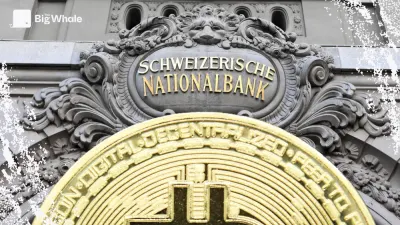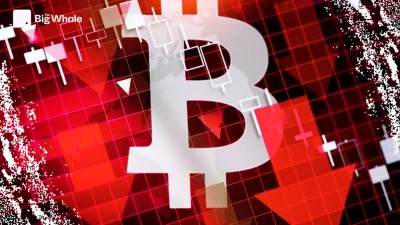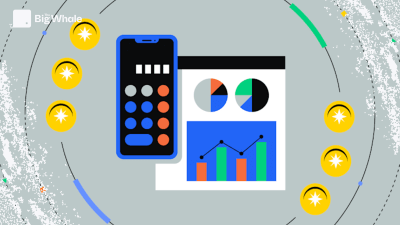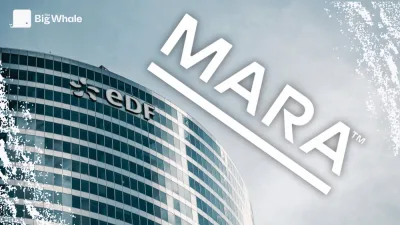TBW - What is the value of the XRP / Ripple ecosystem?

The XRP Ledger (XRPL) and its flagship product: On-Demand Liquidity (ODL)
Launched on 2 June 2012 by Jed McCaleb, Arthur Britto and David Schwartz, XRP Ledger is a blockchain specifically designed to facilitate cross-border payments, usually requiring one to several days and significant fees to execute.
XRP, the native currency of the XRP Ledger network, is used to pay transaction fees and to power the On-Demand Liquidity (ODL) system, a key solution in the cross-border payments infrastructure developed by Ripple.
In practical terms, XRP acts as an intermediary currency in international exchanges: during a transfer, Ripple facilitates the automatic conversion of the original currency into XRP via partner exchanges, before converting these XRP into the destination currency. This approach is not only notable for its speed, but also offers financial institutions the ability to make payments between different currencies without having to maintain local currency reserves, reducing costs and operational complexity.
Several institutional clients are now using this infrastructure, particularly for certain international payment corridors where liquidity and infrastructure are underdeveloped, such as PNC Financial Services for payments from North America to Latin America, or the Spanish bank Santander (a shareholder in Ripple) for certain payments from Europe to Latin America.
On the other hand, while the XRP Ledger is so fast and efficient, it comes at the expense of its decentralisation, one of the reasons why the project is not unanimously supported in the crypto community. Indeed, the blockchain operates via a unique consensus system: users must choose the network validators from a list set up by Ripple, which includes several validators managed by Ripple directly.
A revival in the Ripple ecosystem: the stablecoin RLUSD and DeFi
Beyond ODL by Ripple, the ecosystem is fairly limited in terms of applications and uses. Initially designed for a very specific purpose, the blockchain faces several challenges that it must overcome in order to remain consistent in an ever-changing environment.
In this sense, Ripple launched the Ripple USD (RLUSD) on 17 December 2024 on the XRPL network and Ethereum to enter the largest market in the crypto industry today. In the same way as the USDT or USDC, the RLUSD is backed by holdings of cash or cash equivalents (US treasury bills, for example).
The stakes are high because the adoption of stablecoins could eat into the US company's market share of its institutional solution. While still more practical for transactions involving multiple currencies, stablecoins rely on infrastructures that are just as resilient, efficient, and more decentralised than Ripple's ODL on XRPL.
Already available on some exchanges, the distribution of RLUSD on the largest crypto exchanges is "imminent" according to Monica Lang (president of Ripple) in an interview with Bloomberg on 7 January. Still unavailable in Europe due to the MiCA regulatory novueaur, the US company has nevertheless expressed its willingness to find a way to integrate the region.
Ripple is also looking to capture the activity of other stablecoins on its network by forging partnerships such as with SG-Forge for example (a subsidiary of Société Générale), which is preparing to launch EURCV on XRPL in 2025.
If in the future all currencies were to circulate on public blockchain rails in the form of stablecoins, ODL and XRP could lose their usefulness as intermediaries in international payments, hence the importance of boosting and diversifying the XRPL ecosystem.
The project has been moving in this direction since 2022 and the creation of bridges such as Allbridge to EVM blockchains to enable greater use of the XRP token in DeFi protocols, for example. Despite the lack of programmability of Layer 1, it is even possible today to create decentralised exchange platforms (AMMs) thanks to the XLS-30 update adopted in March 2024.
To support this revival, the XRP Ledger Foundation has several organisations such as XRPL Commons based in Paris, whose aim is to share resources, organise events/hackathons and support developers.
Large dominance of B2B activity on Layer 1
Despite the efforts of the foundation and the community to boost Layer 1, the bulk of XRPL activity is based on Ripple's B2B activity, which is mainly focused on its very aggressive external growth strategy.
Ripple has raised around $295m between 2012 and 2019, and is said by The Block to have raised more than $4.4bn via multiple sales of XRP tokens to exchange platforms and other institutions.
In addition, in an interview with Devin Ryan, director of financial technology research at JMP Bank on 6 January, Ripple CEO Brad Garlinghouse reveals that the company has an XRP reserve of more than $100 billion.
.png)
Net XRP Sales by Ripple, The Block
The San Francisco firm has a veritable war chest, which has enabled it to finance this aggressive strategy and build a very comprehensive service to banking or crypto-native financial institutions. In particular, it has:
- Invested $30 million in 2019 in MoneyGram, a then major cross-border payments company. The deal included a strategic partnership for MoneyGram's use of ODL, before it was terminated due to SEC lawsuits.
- Acquired Metaco in 2023 for $250 million, so it could expand its institutional cryptocurrency holding services.
- Acquired Standard Custody & Trust Company in 2024, to gain additional licenses in its cryptocurrency holding business.
- Invested in venture capital via Ripple Ventures in more than 40 projects closely or remotely related to the XRPL ecosystem.
While the company's overall activities are expanding rapidly around the world through the acquisition of regulated companies in different regions, they are not translating into greater activity on its Layer 1.
If we take Base, Ethereum's main Layer 2 as a point of comparison, all the data, including the number of active addresses for example, shows very little activity on XRPL with less than 100,000 active addresses for XRPL compared to around 1 million for Base.
.png)

Conclusion
While Ripple has been an extremely divisive project within the crypto community, it has to be said that the project has managed to stay at the top for more than a decade in a relatively dynamic ecosystem.
The company relies on a solid, tried-and-tested community, as well as continued strong interest from the general public, who recognise the project's credibility from its long history and its many major partners. This public quickly understands the theme of crypto payments, which is the oldest and best-known use case in the industry.
In addition, the US giant has one of the largest cash balances in the sector to continue funding its operations, which it will be able to deploy more easily if the outcome of the trial with the SEC becomes favourable.
On the other hand, the underlying technology is less commendable than other projects because it is extremely centralised. The project tends more towards the business of a payment service provider based on in-house blockchain technology rather than a true public and permissionless Layer 1, hence the strong criticism of Ripple from part of the crypto community.
Without a vibrant and dynamic ecosystem on XRP Ledger, the XRP token could lose its primary utility as an intermediary via the ODL infrastructure, particularly in the scenario where CBDCs fail to take hold and give way to stablecoins for each currency.



